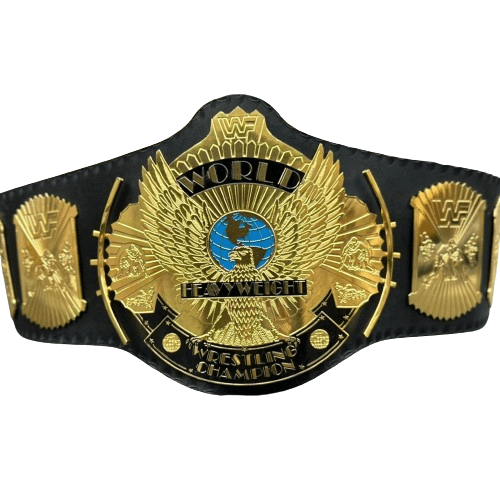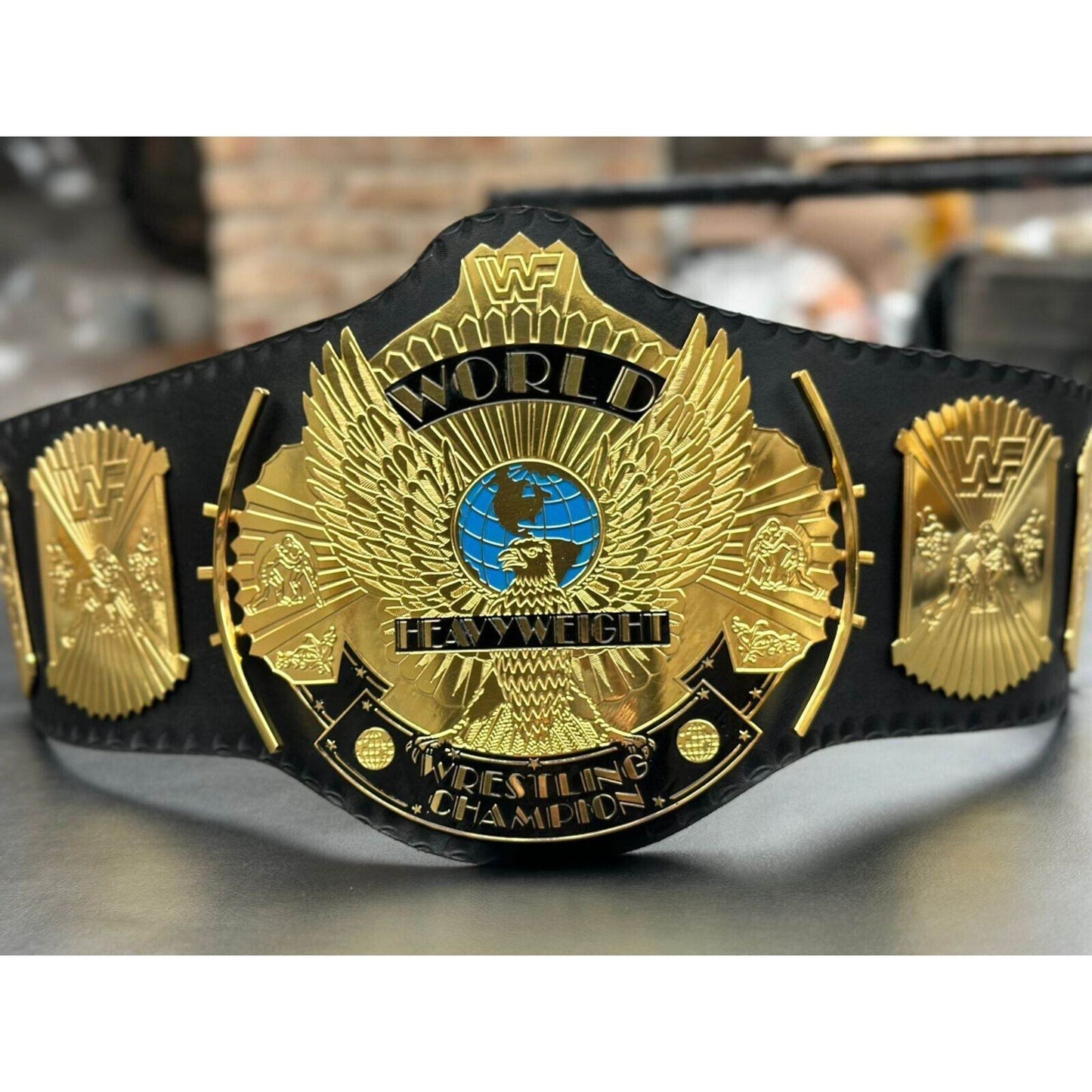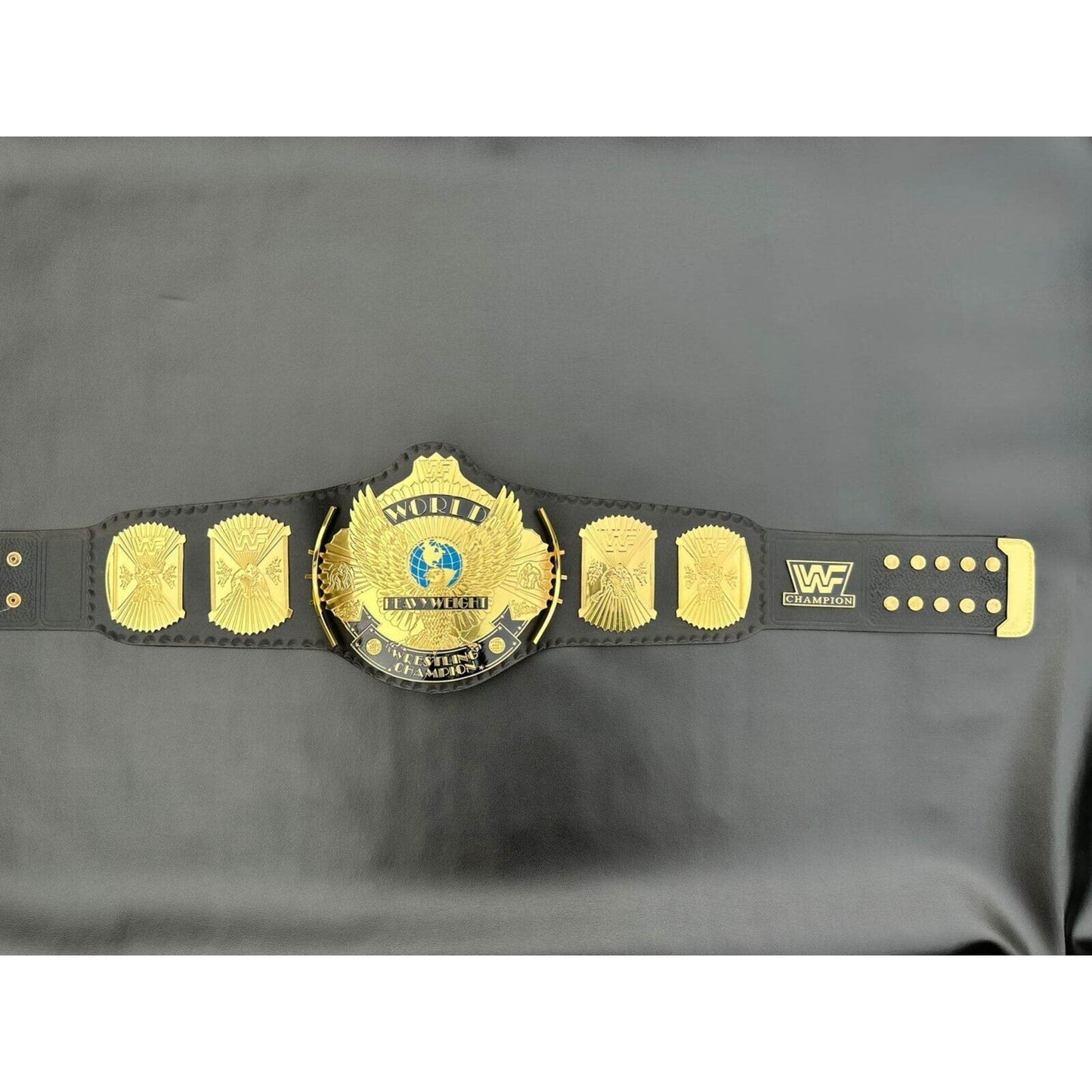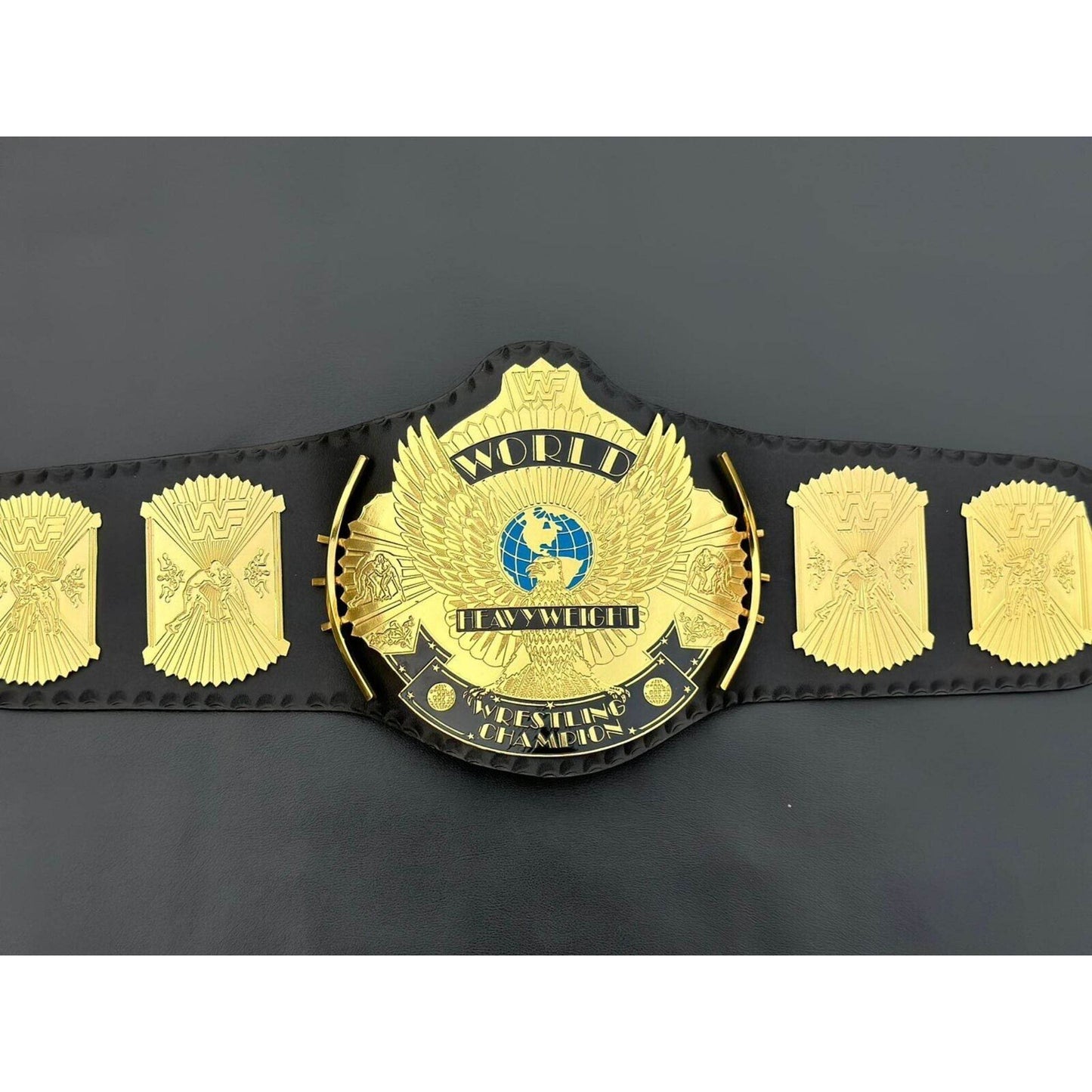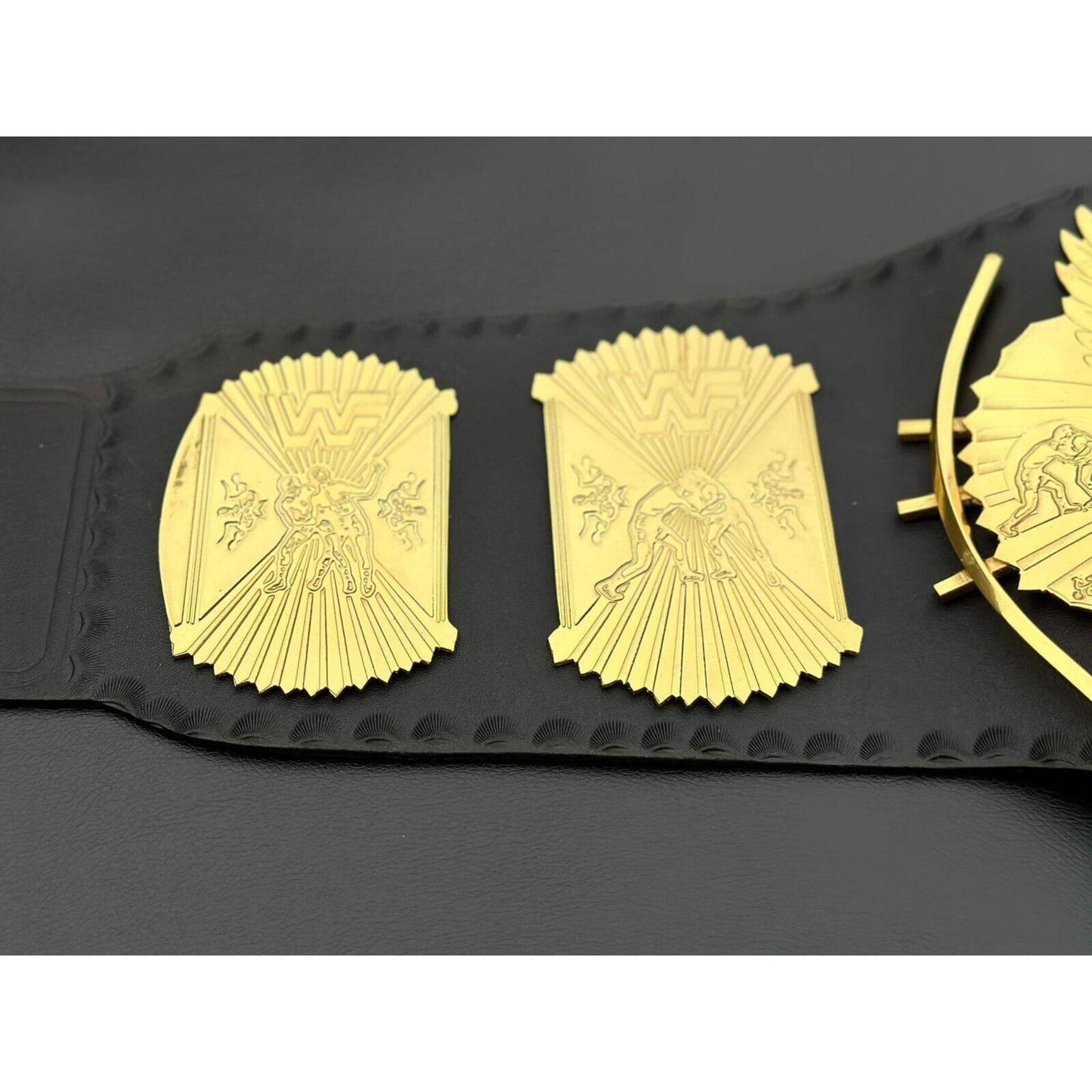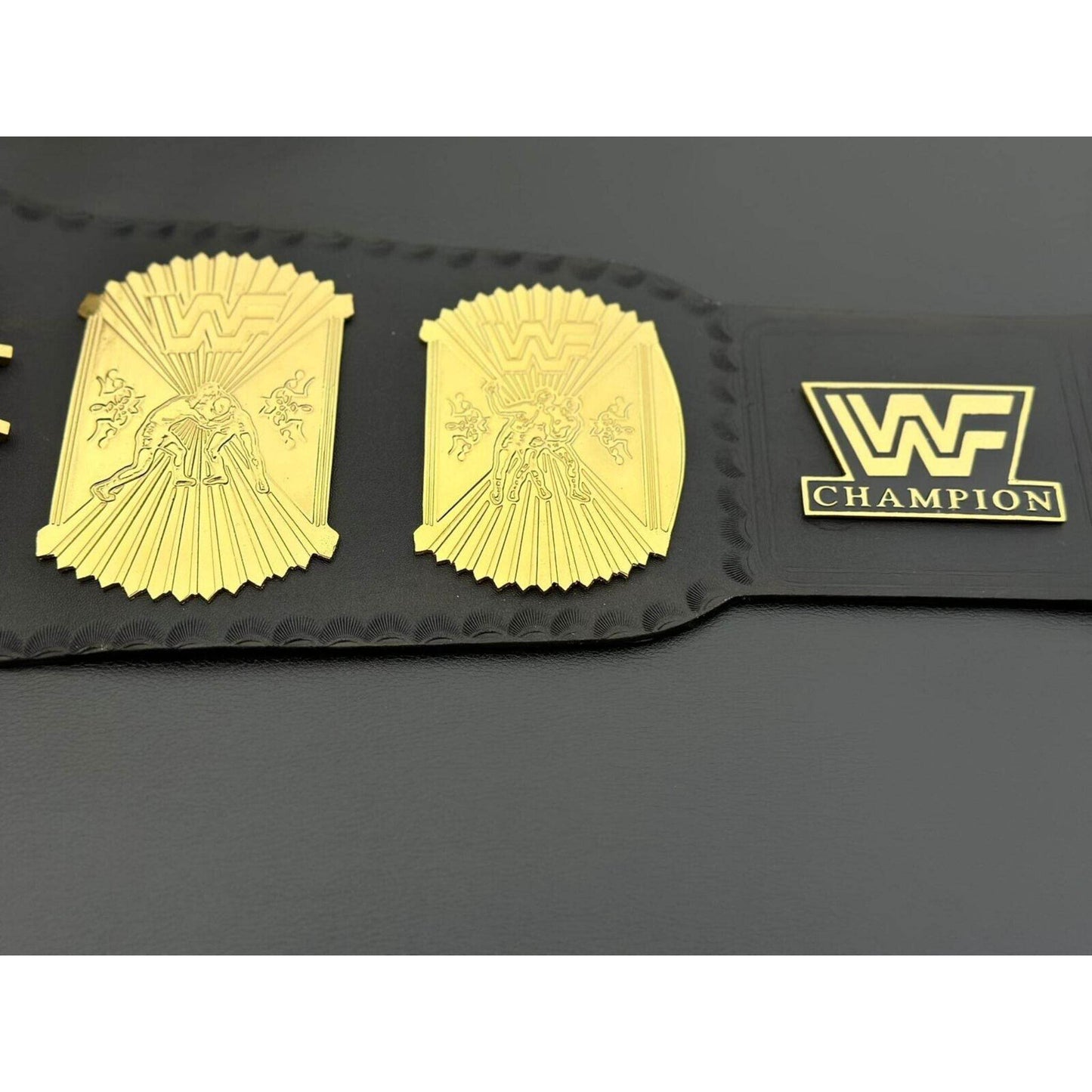WWF Belt
WWF Winged Eagle Championship Belt
WWF Winged Eagle Championship Belt
In stock
Couldn't load pickup availability
WWF Winged Eagle Championship Replica Title Belt
Classic WWE Championship Replica – Golden Era Collectible
Step back into the Golden Era of WWE with the WWF Winged Eagle Championship Belt, one of the most iconic titles in wrestling history. First introduced in the late 1980s, this belt quickly became the symbol of wrestling excellence, worn proudly by legends like Hulk Hogan, Bret “The Hitman” Hart, Shawn Michaels, and The Ultimate Warrior. Crafted as a faithful replica, it captures the prestige and tradition of professional wrestling during one of its most beloved eras.
The centerpiece of the belt features the majestic winged eagle design, with a polished gold main plate measuring approximately 10.5” x 9”. Intricate detailing of the globe, eagle wings, and crown accents are raised to deliver an authentic 3D look. Side plates showcase classic WWF branding, completing a design that is instantly recognizable to longtime fans.
Mounted on a 50-inch strap of premium 4mm black cowhide leather, the belt delivers strength, flexibility, and the authentic championship feel. Weighing approximately 5.8 lbs., it offers the same solid, heavy quality as an actual title belt carried in the squared circle.
Authentic Winged Eagle Wrestling Title Replica – Fan and Collector Must-Have
This Winged Eagle Replica Championship Belt is more than just memorabilia—it’s a tribute to an era when larger-than-life superstars defined the wrestling world. Every detail has been carefully recreated to honor the original, from the bold WWF logo to the engraved etching across the plates.
Perfect for wrestling fans, collectors, and cosplay enthusiasts, this championship belt is designed to shine whether displayed in a collection or worn proudly at fan events. With easy maintenance using a soft cloth polish, it stays brilliant for years to come. For those seeking personalization, engraving options are available, allowing you to add custom names, dates, or messages to make it uniquely yours.
At WWF Belt, we specialize in producing championship replicas that merge authenticity, craftsmanship, and lasting value. Owning the Winged Eagle Championship Belt means owning a piece of history that defined wrestling’s most celebrated decade.
Professional Wrestling Memorabilia – Winged Eagle Legacy
This replica is a timeless reminder of when the Winged Eagle Title stood as the ultimate symbol of wrestling greatness. Its presence instantly takes fans back to the unforgettable rivalries, WrestleMania moments, and title reigns that shaped WWE’s legacy. From Hulkamania to the New Generation Era, this belt represents both the pageantry and passion of professional wrestling at its peak.
Key Features For Winged Eagle Belt:
- Gold-Plated Brass Plates – Polished and detailed with eagle and globe design.
- Main Plate Size – Approx. 10.5” x 9”.
- Genuine Leather Strap – 50” long, 4mm thick cowhide.
- Championship Weight – Approx. 5.8 lbs. (2600g).
- Layered 3D Effect – Plate depth from 2mm to 8mm.
- Custom Side Plates – Featuring classic WWF branding.
- Adjustable Fit – Snap system fits up to 46” waists.
- Collector’s Display – Ideal centerpiece for wrestling fans.
- Easy Maintenance – Wipe clean to preserve shine.
- Tribute to Wrestling Legends – Honors Hogan, Hart, Michaels & more.
👉 Discover more legendary championship replicas at wwfbelt.com
Material
Material
Wrestling Championship Belt
Comes With High Quality BRASS Metal.
Shipping & Returns
Shipping & Returns
Once your order is processed and payment is confirmed, we will Start Processing your item. We use reliable couriers such as UPS, DHL, FedEx, EMS, and SKYNET for delivery .You will receive a tracking number for shipment confirmation. The order will be delivered within 14 to 16 days of ordering.
We accept refunds within 14 days of receipt for items returned in their original, unused condition with all tags and packaging. Please include a copy of the receipt or proof of purchase. Return shipping costs are the buyer's responsibility, and original shipping fees are non-refundable. Refunds will be issued to the original payment method after we receive and inspect the returned item. Contact us with any issues before returning.
Care Instructions
Care Instructions
To maintain your brass and leather championship belt, follow these care instructions:
- Brass Care: Clean the brass with a soft, dry cloth to remove dust. For stubborn tarnish, use a brass cleaner following the manufacturer’s instructions. Avoid abrasive cleaners to prevent scratching.
- Leather Care: Wipe the leather with a damp cloth to remove dirt. Apply a leather conditioner periodically to keep it supple and prevent cracking. Avoid soaking the leather and keep it away from direct sunlight and heat sources.
- Storage: Store the belt in a cool, dry place. Use a soft cloth or bag to protect it from scratches and dust.
Customer Feedback
Customer Feedback
Please leave a positive feedback on:
- Item as described
- Communication
- Shipping time
- Shipping and handling charges
After receiving your item, we would greatly appreciate your prompt feedback. This confirms that you have received your purchase and are satisfied. If you encounter any issues, please contact us directly before leaving negative feedback. We are committed to resolving any problems and value your trust and loyalty as a customer.
The belt is fantastic! Its beautifully crafted and feels authentic. Im very happy with my purchase.
This belt is incredible! The design and quality are perfect, and it looks amazing. A great addition to any collection.
Share
